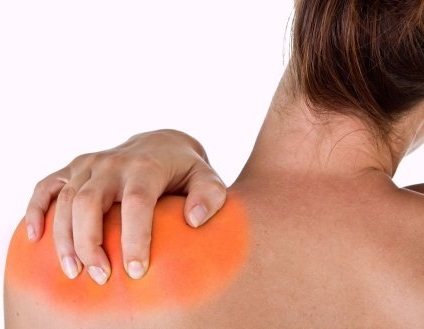|
|
||
|
|
Blog
Check back often for new blog posts.
You can see our articles published each month in the Mansfield
Enterprise newspaper.
9/21/16: How Dry Needling Can Help Relieve Pain Many people suffer from sensitive spots in muscle known as “trigger points.” A trigger point is a small area of tightly contracted muscle that can cause a knot. The knot is an isolated spasm affecting just a tiny patch of muscle tissue (not a whole-muscle spasm like a “charlie horse”). This knot can be tender to the touch, and may also cause pain in other parts of the body (known as referred pain). For example, a trigger point located in the shoulder can cause pain that radiates up the back of the head and causes headaches. People who suffer with trigger point pain often describe it as a deep ache that just doesn't seem to ever go away. In theory, that small patch of muscle chokes off its own blood supply, which causes even more irritation and can lead to an aggravating pain that limits one’s ability to perform normal daily tasks without significant pain. In the past,
common treatments for pain caused by trigger points included
medication and s As our understanding of how trigger points work has increased, new therapies have been developed. A relatively newer treatment for trigger point pain is called Dry Needling. Regina McPhearson at DeSoto Physical Therapy explained what this process involves: "Dry Needling describes the process of inserting a needle into a trigger point without actually injecting any type of medication. The simple act of manually stimulating a trigger point can help to promote the healing process, and it is also quite effective at helping to reduce pain and discomfort." The insertion of the needle into the spasmed muscle fiber causes a twitch response, causing the muscle to “reset” and relax. This reduction in tension frequently leads to very significant and immediate reduction in pain. Doug James of DeSoto Physical Therapy says "We've seen patients in the clinic who have been suffering for years from pain caused by active trigger points. After a few treatments of Trigger Point Dry Needling along with corrective activities to prevent re-injury, they leave with little to no pain in the affected area. It has truly been a life-changing treatment for many of our patients.” Glenn Bagley of Mansfield said that he had been having pain in his back and right leg for over 6 months. He tried medications and stretching, but with no relief. “The pain had gotten so bad that I had to sleep in a recliner, because I couldn’t straighten my back out.” He began Trigger Point Dry Needling treatment at DeSoto Physical Therapy in Stonewall, and began feeling an immediate improvement. “After a few weeks of treatment, I have been able to go back to my normal exercises and can sleep throughout the night without pain. My back feels great and I don’t have the pain or numbness in my leg anymore.” Ask Alisha Timon of Stonewall what "Dry Needling" means to her, and there are no questions. "I thought I was going to have to have rotator cuff repair surgery. It hurt so badly. I couldn't do much of anything without it hurting. Before this treatment, I seriously thought I was going to have to have rotator cuff repair surgery. I only had one treatment at Desoto PT, and it didn't even hurt! I am currently swinging my arm around trying to make the pain happen and I CANT! I'm truly amazed. Seriously unbelievable!” While Trigger Point Dry Needling is not a “cure-all” for all causes of pain, it can be effective at reducing pain caused by overactive muscles and inflammation. Dry Needling can be used to treat many area of the body, including neck and back pain, shoulder pain, hip and leg pain, and even hand and/or foot pain. If you have been suffering pain and want to avoid taking medications and steroid injections, consider giving Trigger Point Dry Needling a try. The good news is, you can now receive this affective treatment close to home in Stonewall. To get more information on the treatment or to schedule an appointment, call DeSoto Physical Therapy at 775-9870, or email djames@desotopt.com.
7/15/16: How To Make Fitness A Priority In Your Life If you want to make fitness a big part of your life, the good news is that it's easier than you probably realize. Getting yourself into great shape will help you look and feel better, and it will also help you to live a longer and healthier life. Getting yourself into shape and living a healthier lifestyle isn't as hard as most people. You don't have to spend countless hours in the gym and eat like a rabbit. Instead, have to make intelligent choices regarding the foods that you eat and your activity level. Little changes in your activity level and a commitment to eating healthier foods can go a long way to getting you in better shape. If you want to make fitness a priority in your life, start out slowly and build upon a solid foundation of regular exercise and a healthy diet. The first thing you need to do if you want to make fitness a priority in your life is to clean up your diet. Most people today eat diets that are high in refined sugars and unhealthy fats. If you want to be healthier, you need to start by fueling your body the right way. This means eating lots of fresh fruits and vegetables as well as lean sources of protein. The great thing about this type of diet is that you aren't actually trying to restrict your calorie intake. Instead, you are simply trying to eat healthier foods. This means that you won't have to fight against hunger all the time. It's also important to remember that you can give yourself a mental break once in a while and allow yourself the occasional cheat food. Once you have your diet under control, the next step in making fitness a priority in your life is to institute an exercise program. When you plan out your exercise routine, there are a few general rules of thumb to follow. First, you need to prioritize resistance training. Resistance training builds muscle, which boosts your metabolism and makes it easier to maintain a healthier body weight. When planning out your resistance training routine, make sure that you are only training each body region three to four times per week so that your body has time to recover. You can do resistance training at the gym or buy some small weight or resistance bands to use at home. In addition to resistance training, regular aerobic exercise should be done. If you’re not used to regular activity, you can start with a daily walking program. Try to get up to at least 30 minutes every day. You can progress to light jogging or running if you feel comfortable. This will help you to burn off excess fat, and will also keep your heart and lungs healthy. If you want fitness to be a priority in your life, you don't have to make it something you obsess about. Instead, focus on making small changes over time. Start by cleaning up your diet and eliminating unhealthy foods and replace them with healthier options. If you haven't exercised on a regular basis in a while, start out slowly by walking every morning or evening. Once you feel like your fitness level is improving then you can start to incorporate resistance training and more intense aerobic workouts. Making fitness a priority in your life will help you to look and feel your best.
5/20/16: Physical Activity for Seniors
Aging, as we
know, is a natural part of life, but it’s not necessarily something
that has to hold us back. Though it comes with some certainties,
it’s entirely possible to age gracefully and remain strong and
healthy into our later years. Many adults, however, view aging as
restrictive and often cut back on physical activity out of fear of
injuring themselves or simply not being able to perform as they used
to. While this may be the truth for some, the fact remains that
physical activity and regular exercise are actually some of the best
ways to combat aging. Though many people focus on regaining their
youth by altering their outward appearance, it’s actually strength,
both mental and physical, that keep us feeling young. It’s this
strength that provides the independence and improved quality of life
that so many of us strive to hold on to and it’s attainability has
never changed. From a very young age, we’ve been told by our parents
that regular exercise has the power to make us feel healthier and
it’s positive mood-altering properties allow us to feel calm and
clear—thankfully, it remains just as true today.
4/4/16: Prevent Back Pain While Traveling As summer is
approaching, many of us will be headed out with our families for a
relaxing stay at the beach or sightseeing around the country. But
all of those hours spent in a car or plane, heavy luggage, or the
extra firm hotel mattresses can do a number to your back.
Thankfully, there are easy steps you can take to make sure your fun
and relaxing vacation doesn’t turn into a painful and frustrating
ordeal.
2/1/16: What Is Osteoarthritis? We all know someone who suffers from arthritis. In fact, you may be having problems with arthritis yourself, but… what is arthritis? Arthritis is inflammation of one or more joints that causes increased pain and limited mobility of the joint. There are dozens of different types of arthritis, but the most common form is osteoarthritis.
Osteoarthritis, also known as OA, is a
degenerative condition that results from wear and tear on a joint Treatment for osteoarthritis is based on the severity of the symptoms. Rest, anti-inflammatory medication, and physical therapy are conservative treatment options that are effective in treating mild to moderate cases of OA. While therapy will not reverse the damage to the joint, it can help to slow the degenerative process and improve mobility by helping to reduce pain, improve strength, and restore range of motion. Physical therapy can help delay or eliminate the need for more aggressive treatments such as injections or surgery.
Your diet can also play an important
role in Unfortunately, arthritis is not a condition that will remedy itself. If you are suffering with joint pain that prevents you from doing your normal daily activities and keeps you from being as active as you’d like, consider seeking treatment from your physician. The earlier treatment is started, the more likely it is for conservative treatment to have positive results. NOTE: Figure A: X-ray image of healthy knee and arthritis knee. Figure B: Artistic image of healthy and arthritic knee. Images courtesy of American Academy of Orthopaedic Surgeons.
1/3/16: Is Your Shoulder a "Sore" Subject?
Your shoulder is an
amazingly complex joint that serves to help you perform many of your
normal activities throughout the day. The shoulder joint is made up
of muscles, bones, tendons, and ligaments that all work together to
give you full range of motion and strength. Imagine the things that
you would be unable to do if you could not reach up over your head
or behind your back. An injury to this joint can cause pain,
weakness, and loss of full function which can limit your ability to
perform everyday tasks such as getting dressed, reaching, and
driving.
The main support for your shoulder is the rotator cuff, a group of four muscles that stabilize the joint during movement. The muscles that make up the rotator cuff are the supraspinatus, infraspinatus, subscapularis, and teres minor. These are the primary structures that hold your upper arm (humerus) to the shoulder blade (scapula). Any injury to the rotator cuff can disrupt the mechanics of the shoulder and in turn cause pain, weakness, and limited motion in the shoulder. Other injuries to the shoulder can include tendonitis of the biceps tendon, inflammation of the bursa (bursitis), frozen shoulder, or a fracture. Injury to the shoulder can occur by traumatic or non-traumatic means. A traumatic injury can be sustained in a car accident, dislocation, or a fall, while a non-traumatic injury occurs over time for reasons such as overuse, bone spurs, or poor posture. Sometimes, shoulder pain can occur with no obvious cause. Continuing activity with a shoulder or rotator cuff injury can increase the severity of the injury, as most rotator cuff injuries will not heal on their own. So what should you do about a sore shoulder? Early treatment can prevent further injury, help to reduce pain, and restore full function. Initially, rest and applying ice can help to reduce soreness. After a few days, you can begin stretches and exercises to improve strength and range of motion of the shoulder. If you continue to have pain after several days, it could indicate a more serious injury, and a visit to your doctor or healthcare provider is recommended. The doctor can recommend the most appropriate treatment option according to the severity of your injury. Often, physical therapy will be recommended for treatment of a shoulder injury. The physical therapist will perform an evaluation to determine the cause of pain and limitations, and will establish a treatment plan to address the problem. Physical therapy treatment can consist of modalities to reduce pain and inflammation, hands-on techniques for improving range of motion, and therapeutic exercise for strengthening. The therapist may also be able to help you pinpoint the underlying cause of your shoulder pain, such as poor posture or faulty mechanics. You should soon begin to notice an improvement in your symptoms. A sore shoulder can be caused by something a simple as a hard day’s work or an awkward sleeping posture, but if the pain persists for more than a few days, it could indicate a more serious injury. For more information on shoulder pain or injury, contact DeSoto Physical Therapy at (318) 775-9870 in Stonewall or email djames@desotopt.com.
|
|
|
© 2016 DeSoto Physical Therapy, LLC |
||

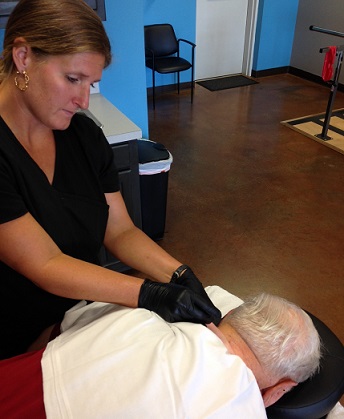 teroids.
While these treatments could be effective, they also involve all of
the risks associated with strong medications. It is also excessive,
as trigger points can be treated with less aggressive measures.
Massage and ultrasound are also common methods used to treat trigger
points, but the effectiveness of these treatments are based heavily
on the skill and knowledge of the provider.
teroids.
While these treatments could be effective, they also involve all of
the risks associated with strong medications. It is also excessive,
as trigger points can be treated with less aggressive measures.
Massage and ultrasound are also common methods used to treat trigger
points, but the effectiveness of these treatments are based heavily
on the skill and knowledge of the provider.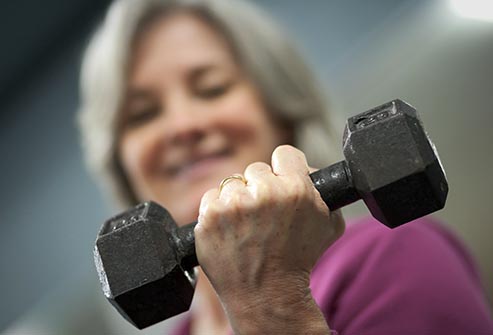 the age of 65 are well known. So why is it that so many adults
reduce their physical activity around this age? Due to the nature of
regular home care or nursing in retirement homes, senior citizens
are not tasked with the same responsibilities they once were. It’s
this dependency on family and nurses that can ultimately lead to a
more sedentary lifestyle and one that prevents healthy physical
activity when it’s needed most. With this reduction in normal daily
activity, seniors can lose roughly 10% of their muscle mass each
year. When this happens, both the mind and body that are negatively
affected. But this process doesn’t have to happen and there’s no
reason why the last decades of retirement can’t be happy, healthy
and productive ones.
the age of 65 are well known. So why is it that so many adults
reduce their physical activity around this age? Due to the nature of
regular home care or nursing in retirement homes, senior citizens
are not tasked with the same responsibilities they once were. It’s
this dependency on family and nurses that can ultimately lead to a
more sedentary lifestyle and one that prevents healthy physical
activity when it’s needed most. With this reduction in normal daily
activity, seniors can lose roughly 10% of their muscle mass each
year. When this happens, both the mind and body that are negatively
affected. But this process doesn’t have to happen and there’s no
reason why the last decades of retirement can’t be happy, healthy
and productive ones.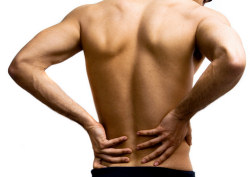 of pain in your neck or low back. When sitting in a car or plane,
try to remember to avoid sitting shifted towards the left or right.
This won’t cause you much problems on a short trip across town, but
can really start to bother you after longer distances. It is also a
good idea to make a pit stop every 1-2 hours to stretch and walk
around the car a few times. This will keep the muscles in your back
and legs from getting too stiff. Using a small pillow for your neck
and/or low back can help relieve the strain of sitting for long
amounts of time. A pillow on your low back will help you sit with
better posture and avoid hunching over.
of pain in your neck or low back. When sitting in a car or plane,
try to remember to avoid sitting shifted towards the left or right.
This won’t cause you much problems on a short trip across town, but
can really start to bother you after longer distances. It is also a
good idea to make a pit stop every 1-2 hours to stretch and walk
around the car a few times. This will keep the muscles in your back
and legs from getting too stiff. Using a small pillow for your neck
and/or low back can help relieve the strain of sitting for long
amounts of time. A pillow on your low back will help you sit with
better posture and avoid hunching over.  over the years. OA can develop in any joint, but is most frequently
found in the hands, neck, low back, knees, hips, and shoulders. The
breakdown of bone and cartilage in the joint is often referred to as
“bone-on-bone.” The cartilage in your joints serves as a cushion to
absorb the forces caused by everyday activities such as walking and
jumping. As that cushion wears down, it leads to painful movements
and limited range of motion, which can prevent you from doing your
normal work and daily activities. The breakdown of cartilage can be
made worse by prior injuries, vehicle accidents, or genetics and can
begin with sudden or gradual increase in pain.
over the years. OA can develop in any joint, but is most frequently
found in the hands, neck, low back, knees, hips, and shoulders. The
breakdown of bone and cartilage in the joint is often referred to as
“bone-on-bone.” The cartilage in your joints serves as a cushion to
absorb the forces caused by everyday activities such as walking and
jumping. As that cushion wears down, it leads to painful movements
and limited range of motion, which can prevent you from doing your
normal work and daily activities. The breakdown of cartilage can be
made worse by prior injuries, vehicle accidents, or genetics and can
begin with sudden or gradual increase in pain.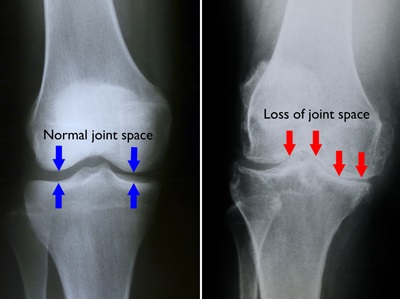 controlling arthritis symptoms. Foods high in processed sugars,
saturated fat, artificial sweeteners, or gluten can increase
inflammation in your body. Excessive alcohol consumption may also
can increase inflammation. Cutting back on these foods and
increasing the proportion of fruits and vegetables in your diet will
help to reduce inflammation. Also, consider replacing some of your
red meat with fish. Fish is a good source of protein and is
generally much lower in saturated fat than red meat. Fish is also a
good source of omega-3 fatty acids which can help reduce
inflammation (and is also good for your heart!).
controlling arthritis symptoms. Foods high in processed sugars,
saturated fat, artificial sweeteners, or gluten can increase
inflammation in your body. Excessive alcohol consumption may also
can increase inflammation. Cutting back on these foods and
increasing the proportion of fruits and vegetables in your diet will
help to reduce inflammation. Also, consider replacing some of your
red meat with fish. Fish is a good source of protein and is
generally much lower in saturated fat than red meat. Fish is also a
good source of omega-3 fatty acids which can help reduce
inflammation (and is also good for your heart!).